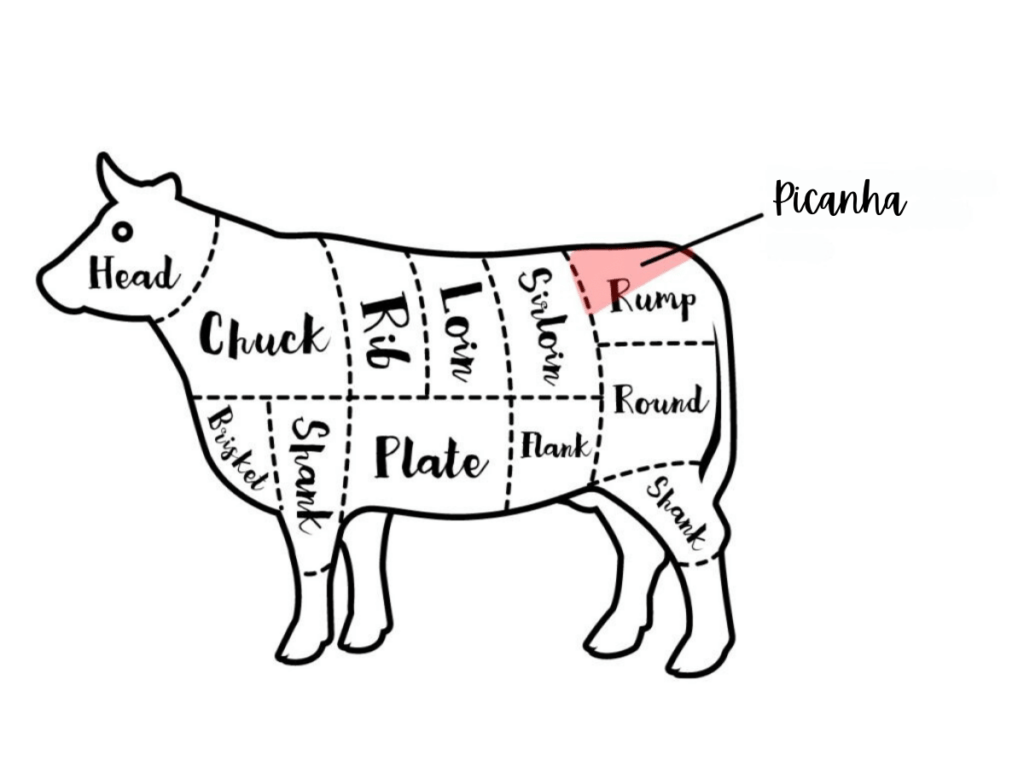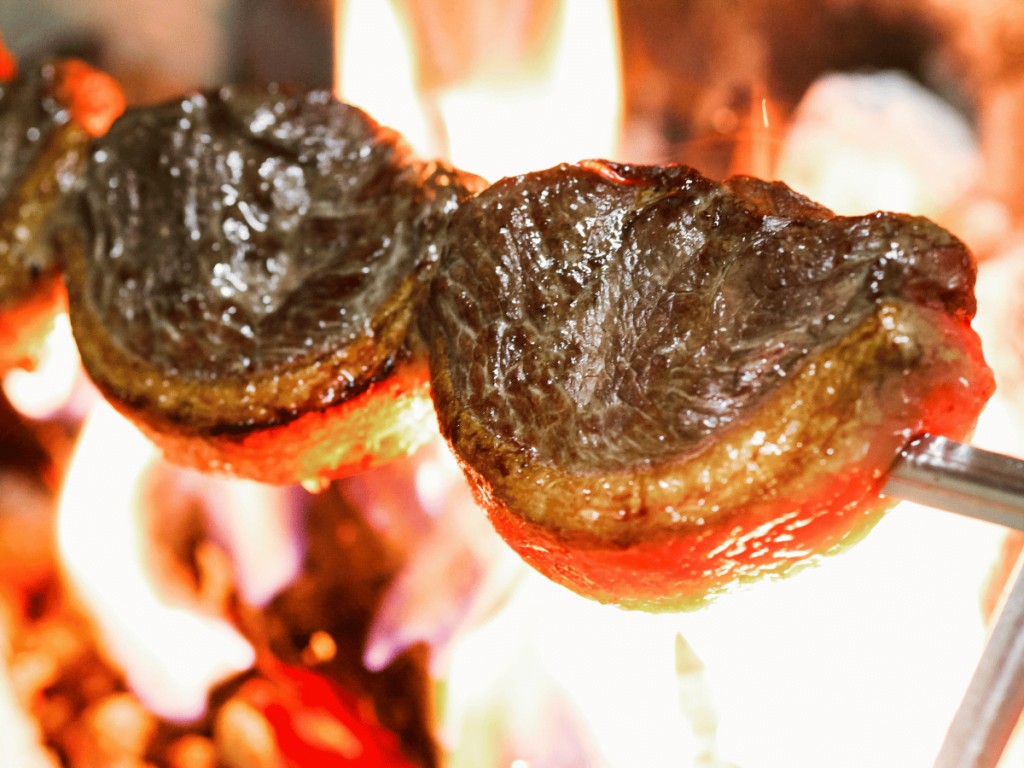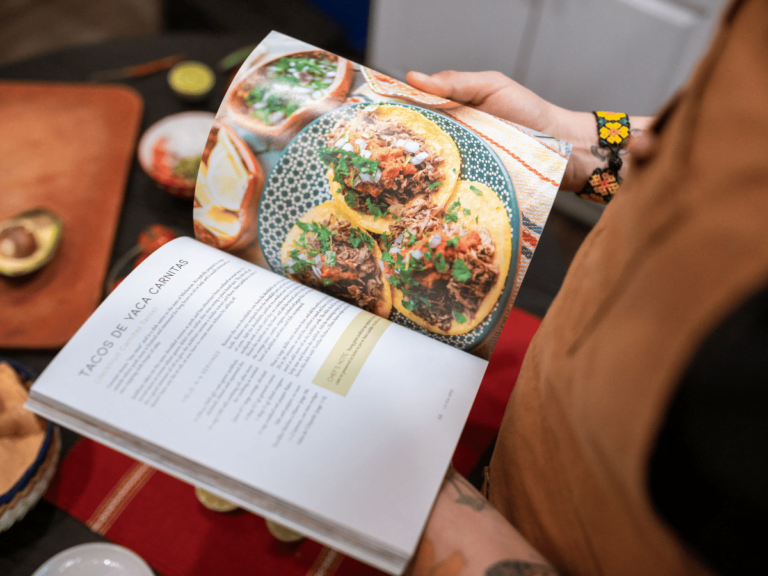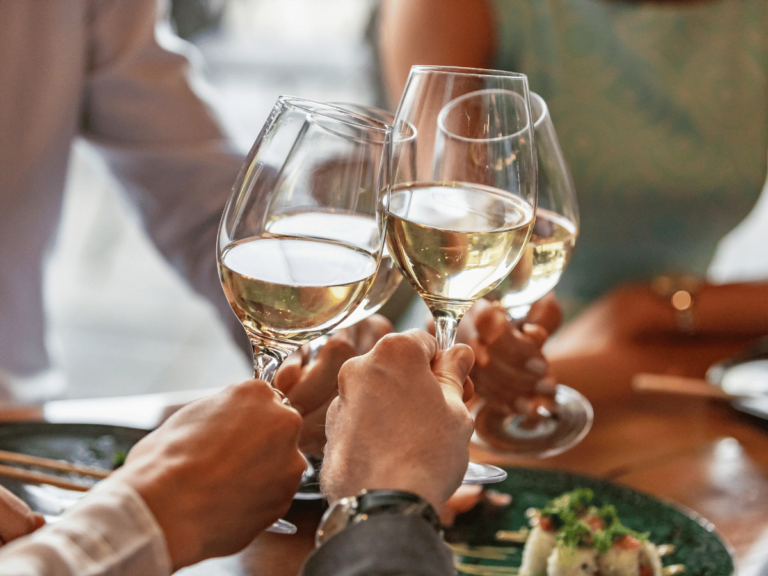Everything You Need To Know About Cooking Picanha Steak
-
Written by: Ricardo De Sousa
- Published:

Picanha, pronounced peek-kahn-yah, is a prized cut of beef that is popularly found in Brazilian steakhouses and Brazilian cuisine. This prized cut of beef comes from the top of the rump, which is also known as the sirloin cap, rump cap, or coulotte steak.
The picanha cut has a distinct crescent shape with a thick layer of fat on one side, called the fat cap. The fat cap is usually between 1/4-inch and 1-inch thick, and when cooked right, the fat melts down into the tender steak creating a rich and succulent meaty flavor.

Although gaining popularity, picanha is still considered a specialty cut outside of Brazil and can only be found in high-end or specialty butchers like Texas de Brazil or Meat N’Bone. However, these cuts are still well worth searching for, offering similar tenderness and juiciness to sirloin steaks at a much more affordable price.
Cooking Methods
1. Grilling: This traditional method for cooking picanha, known as churrasco, involves skewering the picanha and grilling it over an open flame. The intense heat of the flame renders the fat cap, creating a smoky, charred outer layer, while ensuring that the inside remains succulent and tender.
2. Roasting: Slow-cooking picanha in the oven, is best for larger cuts like picanha roast, as this method ensures the steak is cooked evenly and to perfection. When the steak is roasted in the oven, the fat cap bastes the meat as it melts, resulting in an incredibly tender and flavorful steak.
3. Pan-searing: If you’re looking for a fast and delicious way to cook picanha steaks, pan-searing using a cast iron skillet is the way to go. This method caramelizes the exterior, producing a crispy, golden-brown crust while keeping the center juicy and tender.
4. Reverse Sear: The method involves first slow-cooking the meat and then quickly searing it to achieve the perfect balance of a rich, tender center and a crispy, caramelized exterior that is difficult to replicate using the other techniques.

Ingredients
Picanha (Sirloin Cap): To find the perfect cut of picanha or sirloin cap, there are three things you should consider: fat cap thickness, weight, and dryness.
When it comes to fat cap thickness, thicker is better, since a thicker fat cap will provide more richness and juiciness when rendered into the steak. Try to aim for at least 1/2 inch thickness.
Smaller cuts are generally considered a better choice, as they are less likely to contain meat from tougher cuts. Aim for a cut weighing 2-3 lbs. (1–1.4 kg).
After the meat has been butchered, there should not be much liquid running through the meat. The cut should be dry, with most of the fat residing in the fat cap. Dry cuts enhance the flavor and texture of the steak while cooking by absorbing the seasonings more effectively and preventing steaming.

Kosher Salt: If you want to cook picanha the traditional way, the only ingredient needed is coarse salt, like Kosher salt or sea salt. Kosher salt enhances picanha’s natural flavors and texture. It produces a flavorful, crispy crust while cooking and aids in the retention of moisture, keeping the meat juicy. Course salt also slightly tenderizes the meat and provides balanced seasoning without overpowering it, resulting in a well-seasoned, succulent, and delicious picanha.
Seasoning (Optional):
- To add heat and depth to the picanha’s flavor profile, try adding freshly ground black pepper.
- For a robust and savory flavor, rub freshly minced garlic or garlic powder into the meat.
- For an aromatic and rustic flavor, try using dried or fresh herbs such as oregano, thyme, and rosemary.
Olive Oil (Optional): If you are going to pan-sear or reverse-sear the picanha, drizzling the meat with some olive oil will help create the crispy, caramelized crust and also help the seasoning adhere better to the meat.
Butter (Optional): Adding butter as a basting can further enhance the richness and juiciness of the picanha and help create a beautiful caramelized crust. Butter can also be used as a substitute for olive oil, and vice versa.
How To Cook Picanha
Grilling Method

Utensils
- Sharp Knife.
- Cutting Board.
- Metal Skewer.
- Gas or Charcoal Grill.
- Meat Thermometer (Optional).
Preparation
Grab a cutting board and a sharp knife, and carefully cut the picanha roast into thick steaks, making sure to slice the steaks lengthwise and against the grain. By cutting against the grain, the fibers in the meat will become shorter, making it more tender and easier to chew. A 3 lb. (1.4 kg) picanha roast should be able to make 4 steaks.
Once the steaks are cut, bend each steak into a C-shape with the fat on the outside. Then insert a skewer through the center of each steak to hold the shape.
Helpful Tip: Since picanha has a thick fat layer, it may be difficult to pierce the skewer through the fat. So, before you skewer the meat, grab a sharp knife and make a small cut through the fat layer where the skewer will go. This will help the skewer slide through more easily.
When the steaks are secure on the skewers, rub the steaks with some olive oil and season with coarse salt and your desired seasoning. Be very generous with the salt, because as the fat renders and you rotate the skewers, some of the salt will fall off.
Grilling
Preheat the grill to 350°F (180°C). If you cannot measure the temperature directly, you can estimate using the hand test. Place your hand 5–6 inches (12–15 cm) over the grill; if you can keep your hand over the fire for approximately 5 seconds before the heat gets too hot, then the temperature is around 350–400°F (175-200°C) and is ready to go.
Lay the skewers over the hot grill, not too close to the flame, and leave to cook for 30-45 minutes, rotating them regularly so that they cook evenly. If your grill has a rotisserie, add the skewer to the rotisserie and leave it to cook.
Checking Doneness
Look for a nicely browned and charred exterior. The internal meat should be pink and juicy. If you have a meat thermometer, check the internal temperature. Aim for 130°F (54°C) for medium-rare.
Resting & Serving:
Once the meat is ready, remove the skewers from the grill and let the steaks rest for 5–10 minutes to retain juices before serving.
Roasting Method
Utensils
- Roasting Pan.
- Aluminum Foil.
- Sharp Knife.
- Meat Thermometer (Optional)
Preparation
Before you cook the picanha, take it out of the fridge about 30 minutes early to let it come to room temperature.
Pat the meat dry with paper towels to remove any excess moisture.
Preheat your oven to 375°F (190°C).
Using a sharp knife, make shallow cuts in a crosshatch pattern across the fat cap. Be careful not to cut into the meat. This helps render the fat and develop a crispy crust.
Generously season the fat cap and all sides of the picanha with coarse salt, and add freshly ground black pepper or any other seasoning of your choice. If you want, you can drizzle with some olive oil to help the seasoning stick and enhance the browning.
Roasting
Place the seasoned picanha, fat side up, in a roasting pan and if you have a meat thermometer, insert it into the thickest part of the meat, avoiding the fat cap.
Roast the picanha in the preheated oven for 45–60 minutes. For medium-rare, cook until the meat reaches 130°F (54°C); for medium, cook until it reaches 140°F (60°C).
Resting & Serving
Once the roast has reached your desired doneness, take it out of the oven, cover it loosely with aluminum foil, and let it rest for 10 to 15 minutes. This allows the juices to redistribute, making the meat more tender and flavorful.
After resting, use a sharp knife and slice the picanha against the grain into thin strips. Start at one end and work your way across the meat to ensure tender slices.
Pan-Searing Method

Utensils
- Sharp Knife.
- Cutting Board.
- Cast-iron Skillet or Grill Pan.
- Tongs.
Preparation
Before you cook the picanha, take it out of the fridge about 30 minutes early to let it come to room temperature.
Pat the meat dry with paper towels to remove any excess moisture.
Using a sharp knife, lightly score the fat cap in a crisscross pattern. This helps render the fat and allows for better seasoning penetration.
Generously season both sides of the picanha with coarse salt and your seasoning of choice.
Searing
Place your cast-iron skillet on the stove over medium-high heat. Allow it to heat up for about 5 minutes. You want it to be hot, but not smoking.
Once the skillet is hot, add a tablespoon of olive oil and swirl it around in the skillet to coat the bottom evenly.
Using the tongs, lay the picanha steak in the skillet, fat side down first. This helps to render the fat and create a flavorful crust.
Sear the fat cap for about 3–5 minutes until it becomes crispy and golden brown.
Flip the steak to the other side and sear for another 3–5 minutes. Adjust the heat if necessary to prevent burning.
After the initial sear, reduce the stove to medium heat.
Optional
If you want to baste the steak with some butter or add some aromatics like fresh garlic and rosemary, now is the time.
Resting & Serving
Once the steaks reach their desired doneness, remove the steak from the skillet and place it on a cutting board.
Let the picanha rest for 5–10 minutes before slicing it against the grain into thin slices before serving.
Reverse Sear Method
Utensils
- Sharp Knife.
- Roasting Pan.
- Cutting Board.
- Cast-iron Skillet or Grill Pan.
- Meat Thermometer.
- Tongs.
Preparation
Preheat your oven to 225°F (107°C). The oven temperature is lower when reverse pan-searing compared to roasting. This helps bring the internal temperature up gradually and prevents the outer layers from becoming crispy before pan-searing.
Season the picanha generously with salt and your seasoning of choice.
Roasting:
Place the picanha in a roasting pan.
Insert a meat thermometer into the thickest part of the picanha, avoiding the fat cap.
Roast the picanha in the oven for about 45–60 minutes until the internal temperature reaches 115°F (46°C) for rare, or 125°F (52°C) for medium-rare.
Resting
Once the steak reaches the desired internal temperature, remove the picanha roast from the oven and let it rest for 10–15 minutes before pan-searing.
Searing
Heat a cast-iron skillet over high heat until it is smoking hot.
Add a small amount of olive oil.
Sear the picanha fat-side down first for about 2–3 minutes until the fat is crispy and golden brown.
Flip and sear the other side for another 2-3 minutes until a crust forms.
Serving
Slice the picanha against the grain into thin slices, and serve immediately.
Serving Suggestions
Picanha steak pairs wonderfully with a variety of sides and sauces:
- Roasted Potatoes: Crispy on the outside and fluffy on the inside, they complement the juicy steak perfectly.
- Grilled Vegetables: A mix of bell peppers, zucchini, and onions adds a healthy and colorful touch.
- Chimichurri Sauce: This vibrant and tangy sauce enhances the beefy flavor of the picanha.
- Caesar Salad: A refreshing side that balances the richness of the steak.
- Garlic Bread: Ideal for soaking up any juices left on the plate.
Frequently Asked Questions
What is picanha?
Picanha, also known as the sirloin cap, is a flavorful cut of beef with a thick fat cap. It’s especially popular in Brazilian steakhouses.
How do I store leftover picanha?
Store leftover picanha in an airtight container in the refrigerator for up to 3–4 days.
Where can I buy picanha?
Meat ‘N Bone provides premium, high-quality meats, including specialty cuts such as Picanha. They have a few stores in Florida that offer same-day delivery and shipping throughout the United States and Canada.
What is the difference between picanha and tri-tip?
Picanha and tri-tip are both flavorful cuts of beef, but they come from different parts of the cow. Picanha is from the top sirloin cap, while tri-tip is from the bottom sirloin.
Related Posts

